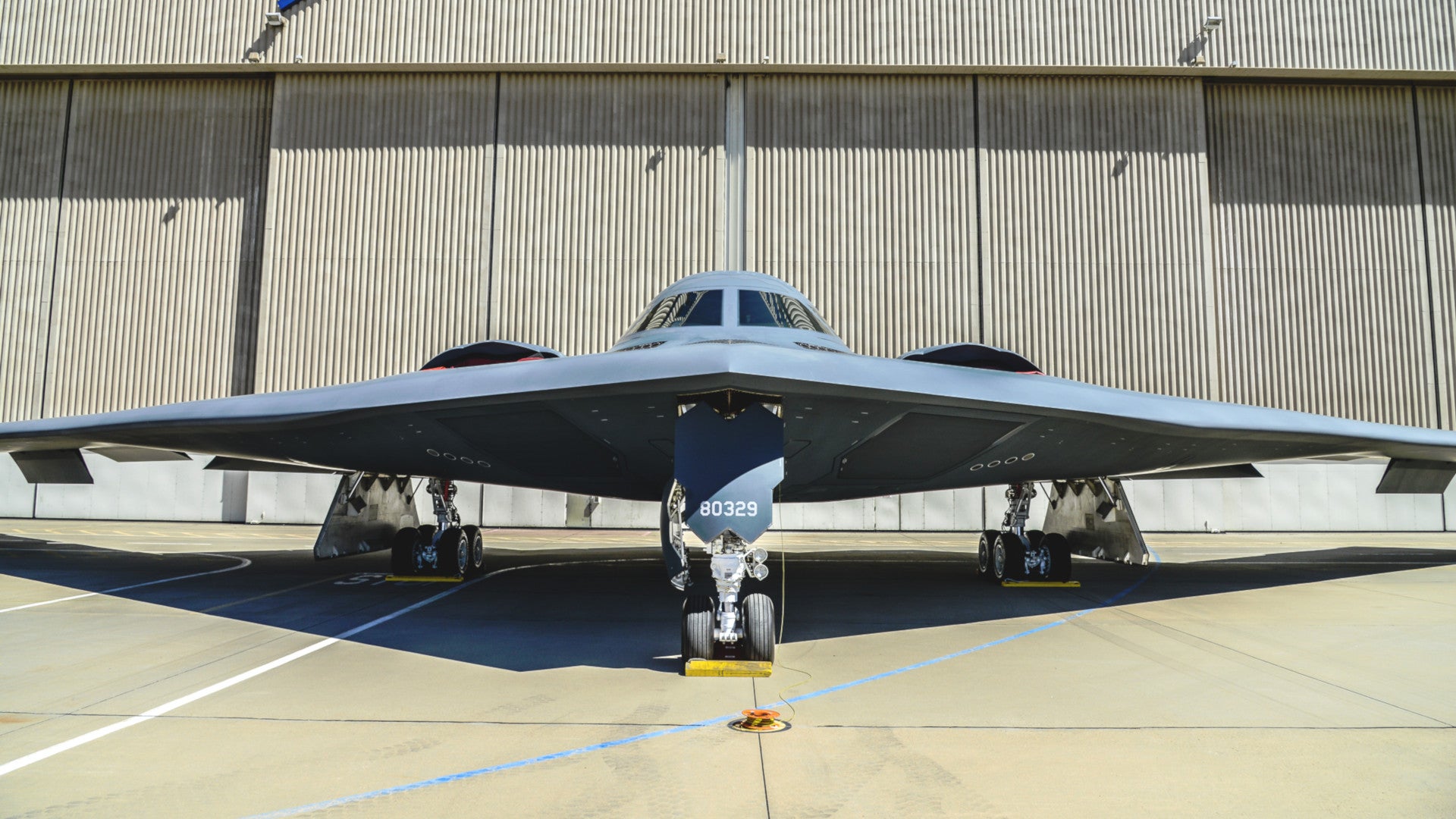The War Zone recently had a chance to visit Northrop Grumman’s facilities at the Air Force’s Plant 42 complex as part of an event to mark the 30th anniversary of the first flight of the B-2 Spirit stealth bomber. Northrop said it has and continues to leverage lessons from the B-2 program to support work on the new B-21 Raider, but also highlighted how it is still adding “game-changing” capabilities to the existing Spirits, including major upgrades as part of the Defensive Management System Modernization program, as well as improving the processes for sustaining and maintaining the bombers. America’s stealth bombers still have many years of life left in them and will find themselves flying alongside B-21s, at least for a period, as the Air Force begins to take delivery of the new aircraft in the next few years.
The B-2’s actual first flight occurred at Plant 42 on July 17, 1989, though the ceremony was on Aug. 20, 2019, more than a month after the official anniversary, due to planning constraints. Plant 42, which also houses Lockheed Martin’s Skunk Works and Boeing’s Phantom Works, among other sites, still supports a number of highly classified projects, including the B-21, and remains subject to very tight security.
“These engineering frontiers that we’ve taken on with B-2 are setting the course for the B-21,” Janis Pamiljans, President of Northrop Grumman’s Aerospace Systems sector and the company’s Corporate Vice President, said at the event. “While I can’t talk much about the details of the B-21, I can share this with you.”
“What we learn on B-2 are finding themselves baselined in the design for B-21 for supportability, sustainability, for mission-capable rate,” he continued. “So we are bringing you the next generation capability. At the end of the day, where the B-2 goes, so goes B-21.”
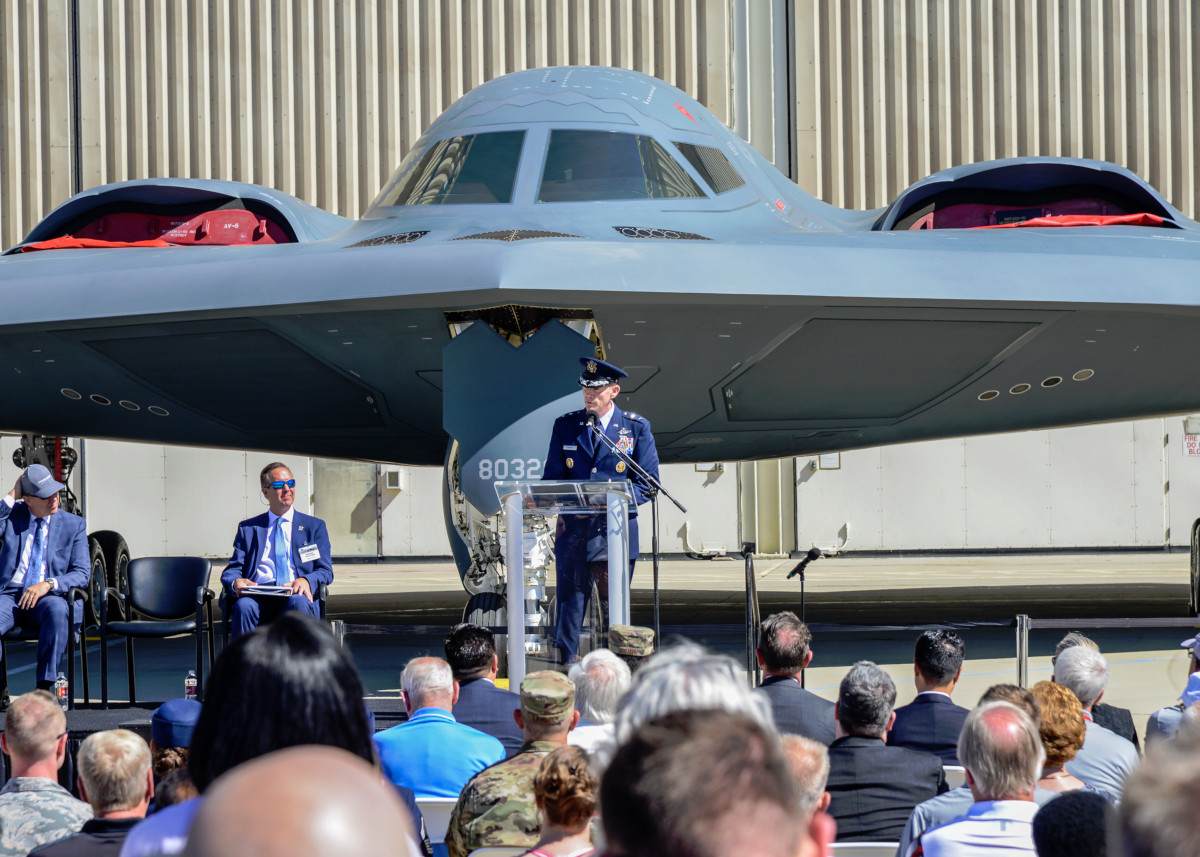
Otherwise, Northrop Grumman and the Air Force both declined to add much in the way of additional detail about the B-21 program or the aircraft itself. Northrop representatives did highlight significant new construction at the company’s Site 4 within Plant 42, which is certainly linked to work on the bomber. There has been similar construction at Edwards Air Force Base, where B-21 flight testing is set to take place in the future.
Journalists who attended the ceremony were also given a separate tour of a building at Site 4 where Northrop Grumman builds center fuselages for Lockheed Martin’s F-35 Joint Strike Fighter. This facility uses a heavily automated Integrated Assembly Line (IAL) that increasingly employs high-precision robotics to increase production speed and improve overall quality control, especially when it comes to drilling holes in critical components, such as intake ducts. The U.S. military had publicly complained in recent years about having to reject F-35s for so-called “quality escapes,” which includes improperly drilled holes that could have impacted the jet’s stealthy characteristics.

Northrop Grumman developed this assembly line infrastructure in cooperation with the U.S.-based aerospace division of robotics company KUKA. In 2016, German-headquartered KUKA sold that portion of the company to Advanced Integration Technology (AIT), after the U.S. government objected to its inclusion in the sale of the overall company to Chinese firm Midea.
AIT continues to support the IAL and Northrop Grumman representatives said that they hoped to expand the same concept to other portion’s of the company’s aerospace work. When we asked, they added that the same general methods using enlarged tooling would be able to support production of larger aircraft, but they did not specifically mention the B-21. An additional production line in another building adjacent to the F-35 IAL at Site 4 already supports unspecified “other programs” and may be using similar production technology.
In July 2019, U.S. Air Force Vice Chief of Staff General Stephen Wilson revealed that the service is looking toward the B-21 making its first flight in December 2021. The first examples are expected to enter operational service sometime in the mid-2020s. It seems very probable, if not likely, that some form of risk reduction prototype or test articles have already flown as part of the Raider’s development. Northrop Grumman’s RQ-180 reconnaissance drone may have also served a dual purpose in supporting this development. U.S. Air Force Major General James Dawkins, head of Eighth Air Force, the service’s top strategic bomber unit, declined to comment on whether the first B-21s would eventually have a pilot-optional capability as outlined in the original requirements when we asked him after the ceremony.
In the meantime, the B-2s will continue to be a vital component of the Air Force’s strategic bomber force and Northrop Grumman continues to modernize those aircraft, as well as improve the maintenance and sustainment processes to keep fleet going. The stealth bombers are high-demand, but low-density assets that have complex time- and resource-intensive maintenance and logistics requirements. All this contributes to the high operating costs for the B-2, which recent reports say is presently around $122,000 per flight hour.
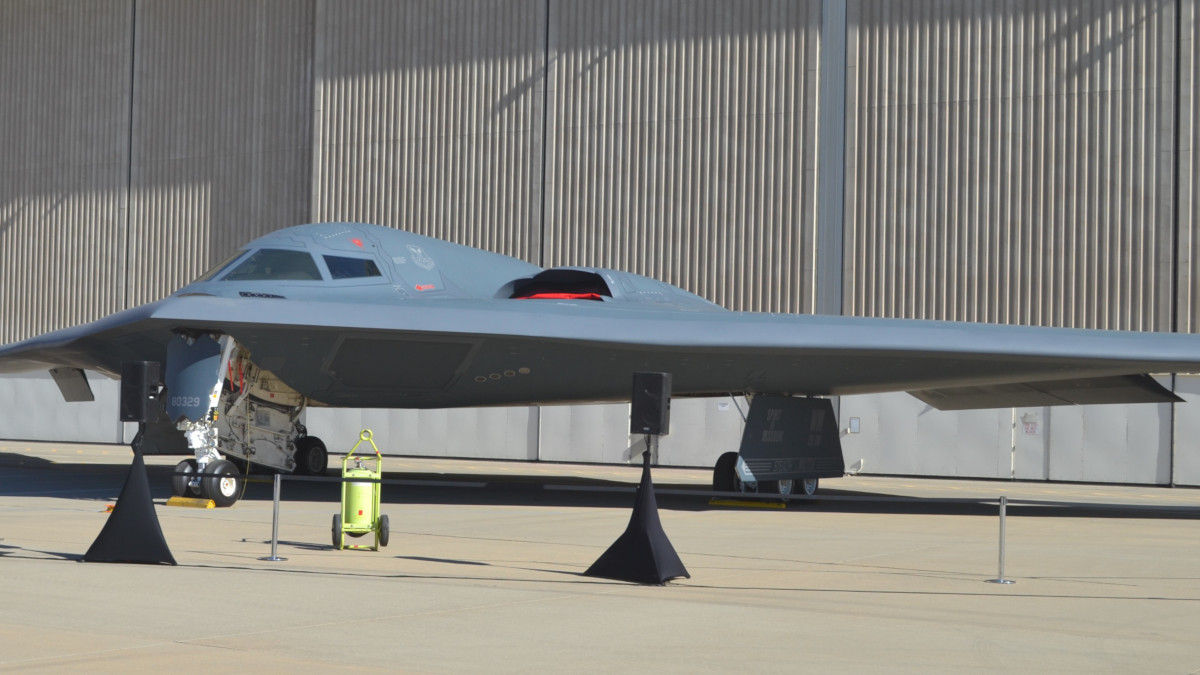
Each B-2 has to go through a programmed depot maintenance cycle every nine years, which includes a general overhaul and a complete reapplication of the aircraft’s special radar-absorbing material skin and paint job. The bombers used to have to go to the depot in seven-year intervals, but improvements to the specialized coatings and other components have given them extended service life. Robotic tooling to help install parts and apply coatings, which helps improve consistency and quality control, has also contributed to this added flying time between depot visits.
Northrop Grumman says the entire depot process takes a year, but that it has been able to speed up the basic work, again through the use of robotic systems. What this means is that the company now includes various upgrade work in each trip to the depot, which helps to reduce costs and improve availability rates. At present, the 19 combat-coded B-2s have a mission capable rate just over 60 percent. An additional bomber is at Edwards Air Force Base in a non-combat test capacity. Two of them, roughly 10 percent of the fleet, are at Plant 42 for depot work at any one time.
Past B-2 modernization projects have included new communications equipment and improved avionics. The latest major upgrade effort, which is going on right now, is the Defensive Management System Modernization (DMS-M) program.
“By leveraging ‘state-of-the-art’ electronic warfare antennae, processors, controller, and displays, B-2 aircrews will realize unprecedented situational battlespace awareness and dynamic, real-time threat avoidance in the most complex radio frequency emitter environments,” is how the Air Force has described the updates in budget documents in the past. “The inherent increased sensitivity of the modernized DMS over the legacy system, with increased processing power, will build a battlespace picture that could be shared with joint force platforms by onboard communication systems.”

It is the “largest major modification to the aircraft ever,” Richard Sullivan, Northrop Grumman’s B-2 Program Manager said at a media round table after the ceremony on Aug. 20, 2019. “It’s a combination of changing the display subsystem … changing the Defensive Management System avionics, changing the antennas – the antenna technology today and the math and the computing horsepower has changed the ability to build things that perform … just a little bit better for penetrating aircraft – and then the software systems. … There’s new software that helps provide pilots better situational awareness.”
We asked Sullivan if he could offer any additional about the new defensive suite, but he said he could only describe it as “game-changing.” The public statements on DMS-M focus heavily on improved electronic warfare capabilities, as well as added data sharing with sensors on offboard platforms, to spot, geo-locate, and categorize hostile defensive nodes, including air defense radars. The new defensive systems also have a secondary electronic intelligence capability.
The DMS-M upgrades will allow crews to rely less on rigid mission planning and be more readily able to change their routes and tactics on the fly based on situational threat information. Electronic warfare systems will provide an additional set of tools to ensure the B-2s can get to their targets even as potential opponents, especially Russia and China, continue to improve their integrated air defense networks and develop potential countermeasures to detect and engage stealth aircraft.
In addition, there has also been talk over the years about adding additional defenses, including hard-kill anti-missile systems, using either physical interceptors or directed energy weapons, on various U.S. military aircraft. Northrop Grumman itself has a patent for an anti-missile interceptor system for stealthy aircraft, which The War Zone
has explored in detail in the past.
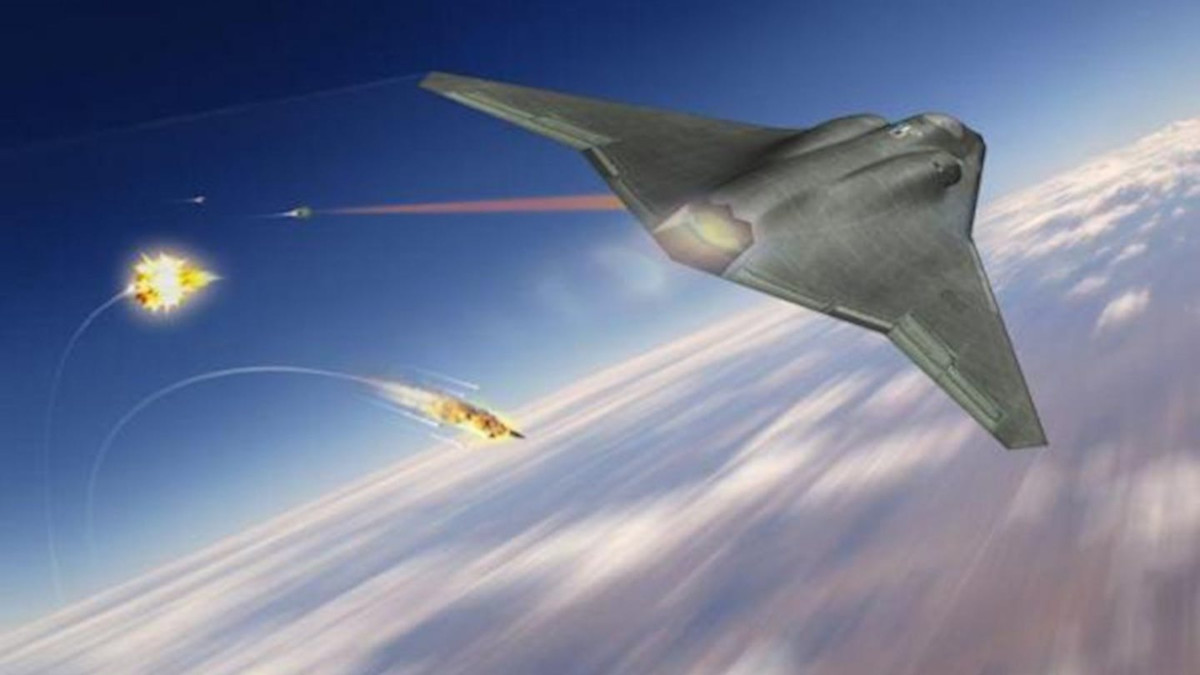
There have been some concerns about the DMS-M schedule and the upgrade program might be looking at an eight-month delay due to complications with the software backbone that Sullivan mentioned. At present, Northrop Grumman is only on contract to modify three B-2s as part of the ongoing development of the DMS-M systems and the company could not provide a target date for when bombers with the upgrade would reach an initial operational capability. The first aircraft with the DMS-M upgrades, serial number 88-0329, also known as the Spirit of Missouri, was actually the one on display at the ceremony and is scheduled to head back to duty with the 509th Bomb Wing next month.
These upgrades will ensure that the B-2 remains operationally relevant as the B-21 comes online. Northrop Grumman will almost certainly leverage work it is still doing on the Spirits to support the development of the Raiders, too. It is also very possible that the B-21 program, and technologies the company has been developing for it, has been a factor in the B-2 upgrade work, as well.
The Air Force says that the Raiders will replace the Spirits eventually, but the transition won’t be immediate and it remains to be seen what that final schedule might look like. Virtually every independent force structure analysis the service has commissioned recently has called for more bombers overall, which might lead to a reassessment of the exact retirement date for the B-2.
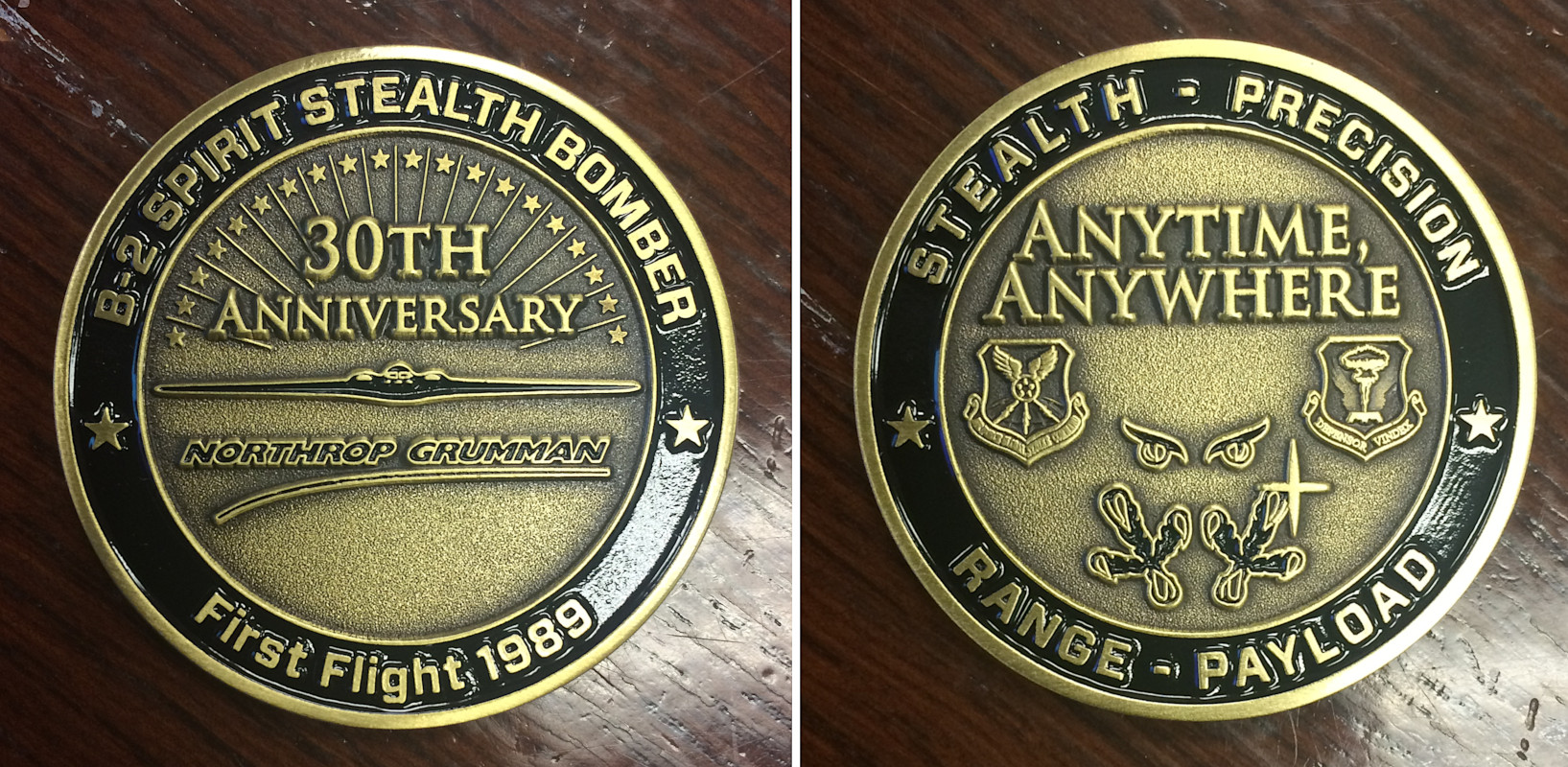
The B-2s have a service life of around 20,000 flight hours and none of them have flown more than 7,000 hours after more than two decades of active service, according to Northrop’s B-2 Program Manager Sullivan. At this same rate, the planes could fly for another 20 to 25 years before the need for a more extensive structural life extension. Any plans to add more bombers to the overall force could still cause issues for the U.S. government with regards to the New Strategic Arms Reduction Treaty with Russia, an issue The War Zone
has explored in-depth previously.
Whatever the case, with all eyes on the B-21 program, it seems clear that even after 30 years, the B-2 remains at the forefront of the Air Force’s combat capabilities. Depending on how force structure and other requirements evolve in the near future, the two bombers may find themselves flying side-by-side for an extended period of time.
Author’s note: Northrop Grumman provided travel and accommodations for this event for this journalist.
Contact the author: joe@thedrive.com
